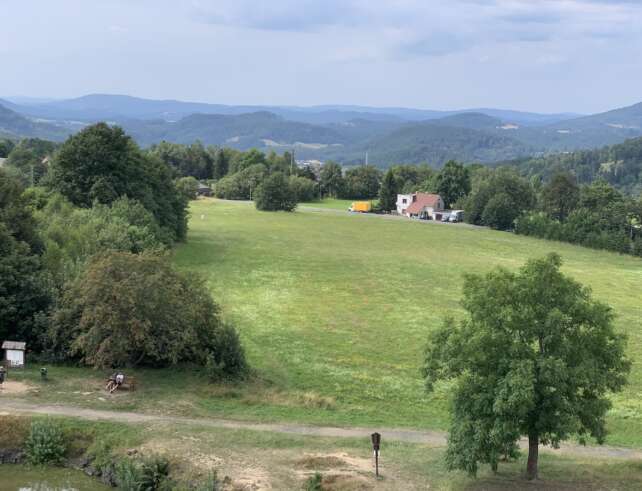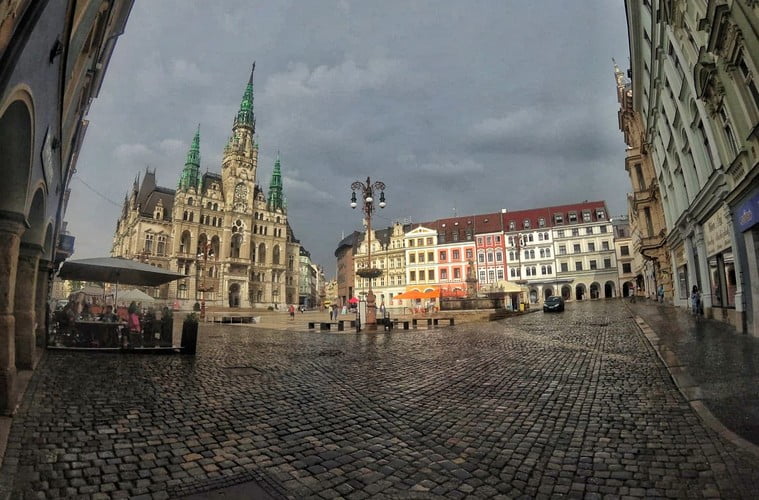Share This Article
Panská skála is a unique place. It’s a National Nature Monument and an impressive outcrop of basalt rocks! It serves as tangible evidence of volcanic activity in this region, as well as a cool spot for a break on the road and an interesting photo shoot!
Location and Access
Panská skála is located in the Sudety Mountains, more precisely in the Lusatian Mountains. It is situated one kilometer from the center of the town of Kamenický Šenov. Administratively, it belongs to the Liberec region. It is less than 50 kilometers away from the city of Liberec.
At the National Nature Monument Panská skála, there is a sizable parking lot and the place itself is located along the road connecting Kamenický Šenov and Nový Bor. It is a few hundred meters from the mentioned road. Parking costs 50 CZK per hour, and there’s a small shop on the premises where you can buy snacks or souvenirs, a bistro, and free toilets. From the parking lot to the rock itself, the trail will take you a few minutes.
This location is a good point during hiking trips. You can reach it following hiking trails. The blue, yellow, green hiking trails, as well as the “Varhany” bike path, lead to Panská skála.
Panská skála measures 597 meters above sea level, but don’t be daunted by this height. From the parking lot to the summit, the elevation gain is only a few dozen meters.
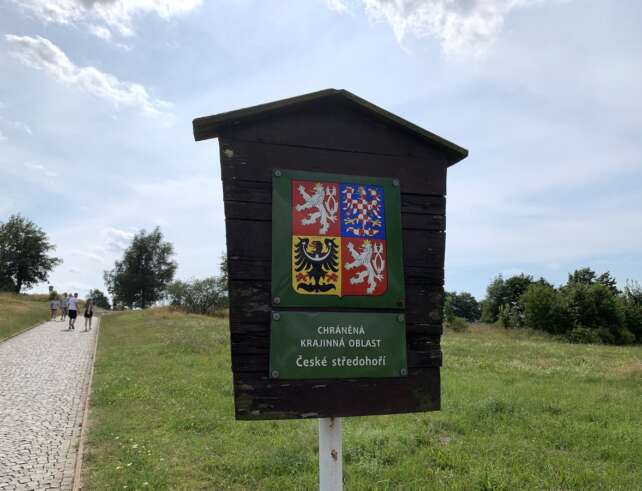
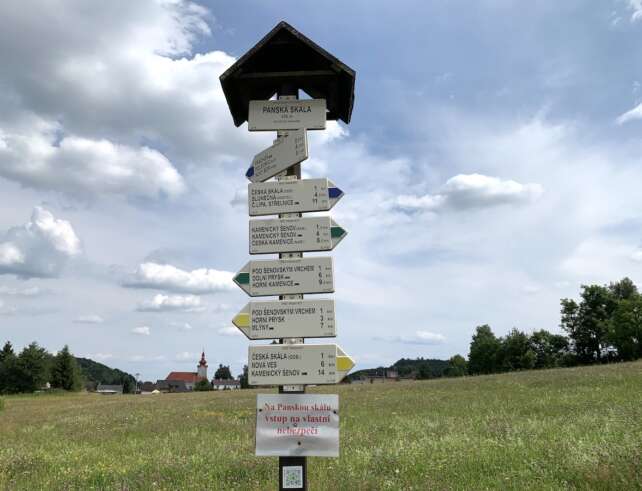
Panská skála – history of the place
Let’s delve into the geological history of the former Panská skála quarry shortly. But first, let’s start with the history of the protection efforts for this place. The first attempts appeared already in the 19th century when, among others, local residents and representatives of the Českolip Hiking Club, as well as the volcanologist Josef Emanuel Hibsch, undertook actions to protect Panská skála. In 1878, they addressed a letter on this matter to the Bohemian Land Committee, which met with a negative response.
A few years later, in 1885, the same commission issued a decision ordering the cessation of basalt mining. However, mining likely continued. In 1902, a Protection Fund was established with the aim of securing this site. In 1906, one of the quarry walls was leased from the mine owner, and subsequently, this lease was extended over the years. Nevertheless, mining continued until 1913 when the district office in Děčín issued a total and immediate ban on mining. This decision led to claims from the owners and demands for compensation for the potential losses incurred.
Officially, mining was slowed down, but cases of basalt extraction sporadically occurred over the years. There was an idea to leave the outcrops “in peace” and continue mining inwards. The final ban on extraction only appeared in 1948, and in 1953 Panská skála was declared a National Nature Monument. The list of monuments currently includes 125 objects of more than regional significance. The protected area covers 1.27 hectares.
Panská skála owes its appearance to the basalt extraction that took place in the 18th century. The basalt mined here was sent to the Benelux countries, and its primary use was for breakwaters since this rock shows high resistance to the action of seawater.
Thanks to its monumental appearance, Panská skála has appeared in many film productions, such as “The Proud Princess,” as well as in music videos (including that of the Polish band Riverside).
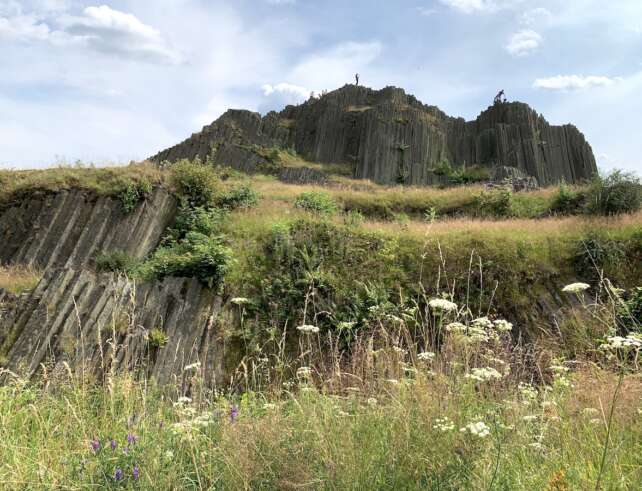
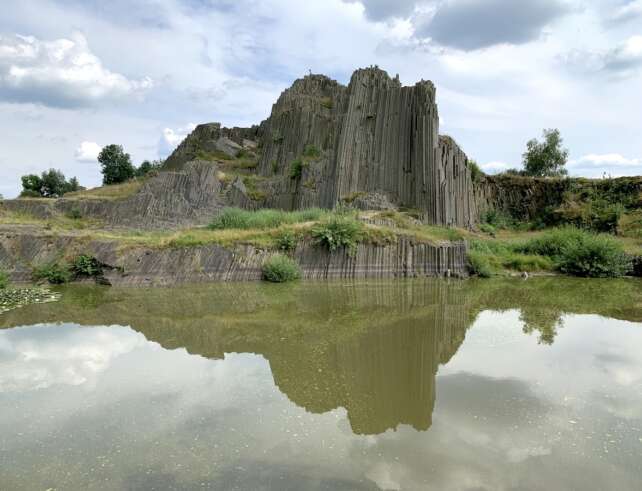
Geology
The basalt rocks we can observe on the surface were formed in the Tertiary period, about 30 million years ago. At that time, volcanoes were active in this region. The lava from which the rock was formed likely flowed from about 30 kilometers beneath the surface. The cause of the volcanic phenomena was the collision of the African and European plates, leading to the Alpine orogeny.
The basalt columns that we can observe at the Panská skála outcrop are “textbook” examples of this rock formation. They are about 20-30 centimeters in diameter, and their length can reach up to 20 meters. These columns have a hexagonal cross-section and look impressive both when viewed “from the side” and in “top-down” cross-section.
The basalt rock we see on-site is cryptocrystalline, meaning that its crystalline structure will be difficult to observe with the naked eye. It is a volcanic rock with a basic reaction. Basalt can come in different colors, such as black, gray, or green. In the case of Panská skála, as seen in the photographs, we are dealing with gray basalt.
Due to their appearance and vertical, very orderly, and symmetrical shape, basalt columns are sometimes referred to as “organ pipes.” In the Polish UNESCO Geopark Land of Extinct Volcanoes, we can admire the not as spectacular but still interesting Wielisławice Organs or Myślibórz Small Organs.
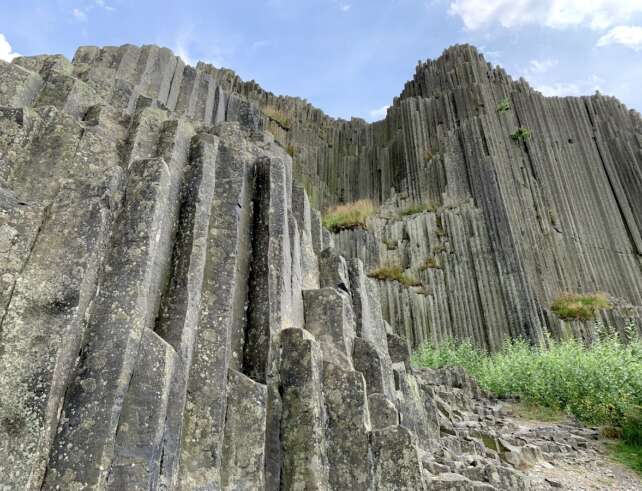
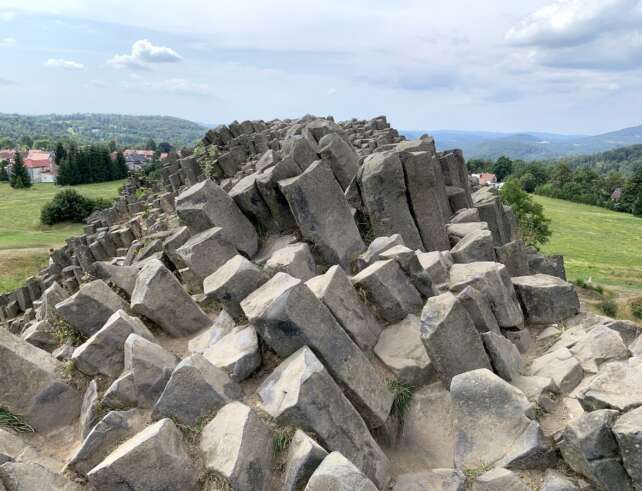
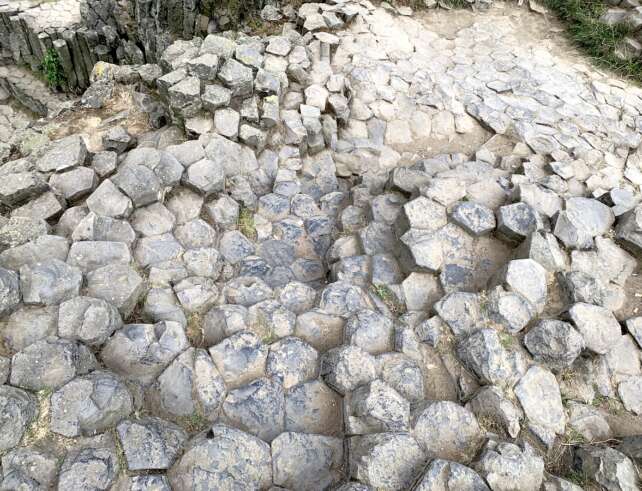
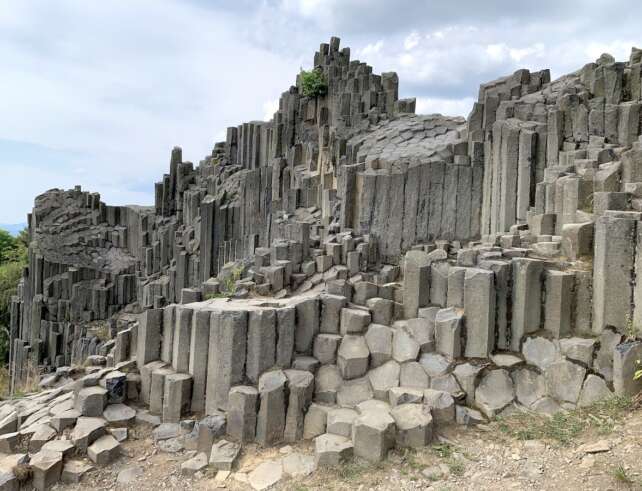
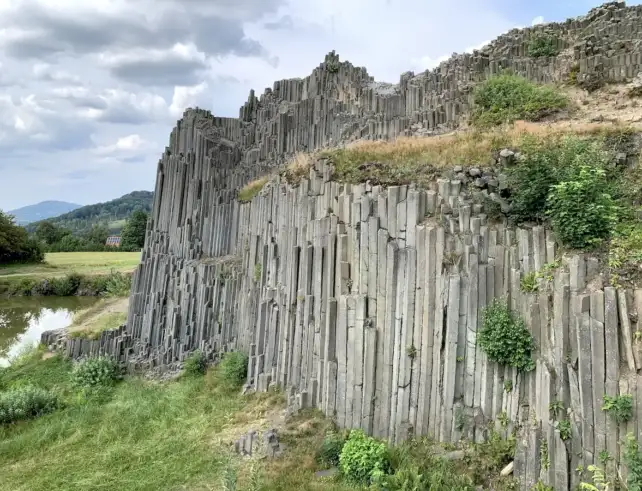
Worth a visit?
Panská skála, although not a high peak, is indeed impressive and undoubtedly constitutes one of those attractions that are worth visiting to appreciate the beauty and unique geological features of the place. The impressive basalt columns you can admire here are a rarity in this part of Europe and represent a true wonder of nature.
Visiting Panská skála, one can feel like they’re in another world. Basalt columns, formed by the rapid cooling of volcanic lava, create a landscape straight out of a fantasy tale. It is definitely a must-see spot for anyone interested in geology.
The site is also ideal for educational trips, offering both children and adults the opportunity to see firsthand the processes that took place on Earth millions of years ago. Looking at these impressive rock formations, one can only marvel at the incredible forces of nature and how beautifully they can shape our world.
For those in search of interesting geotourism locations, Panská skála is the perfect choice!
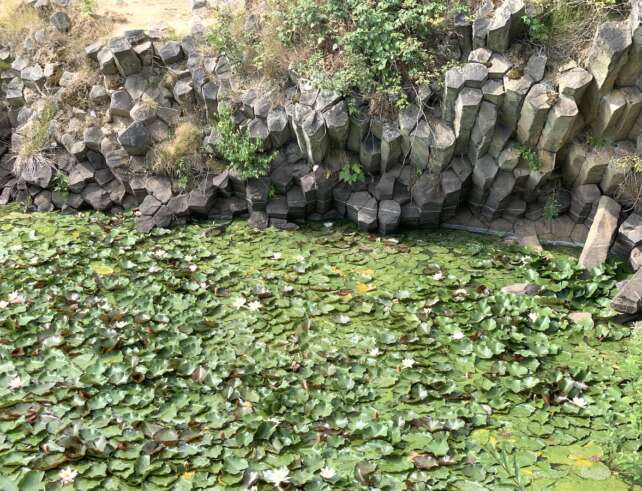
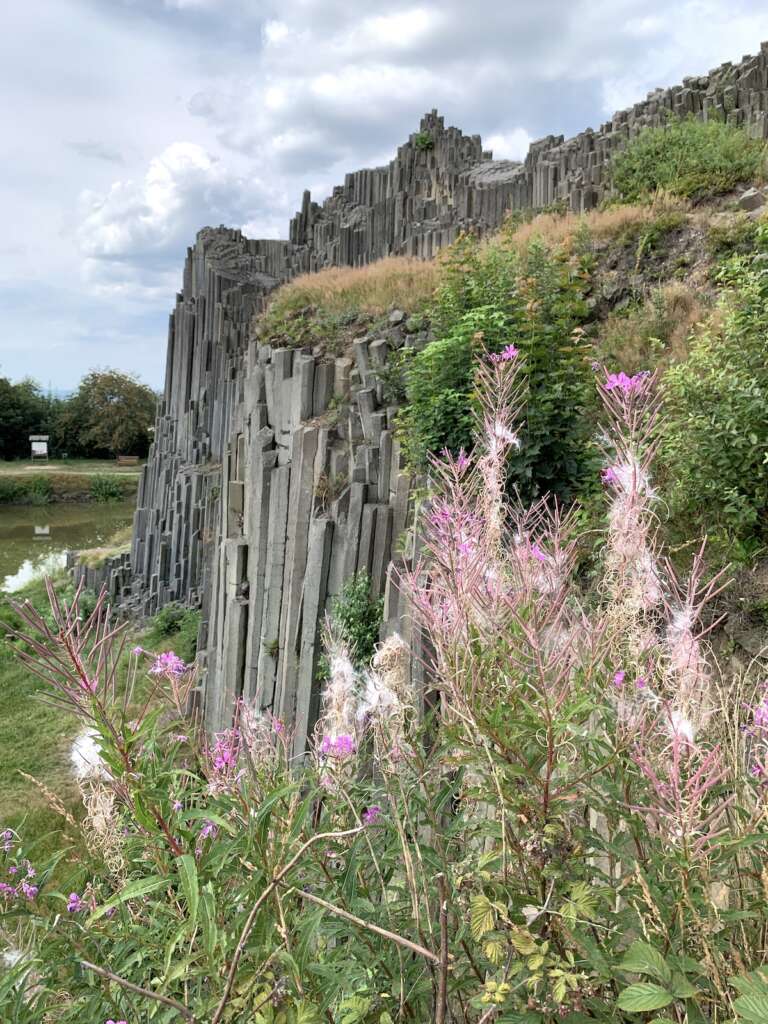
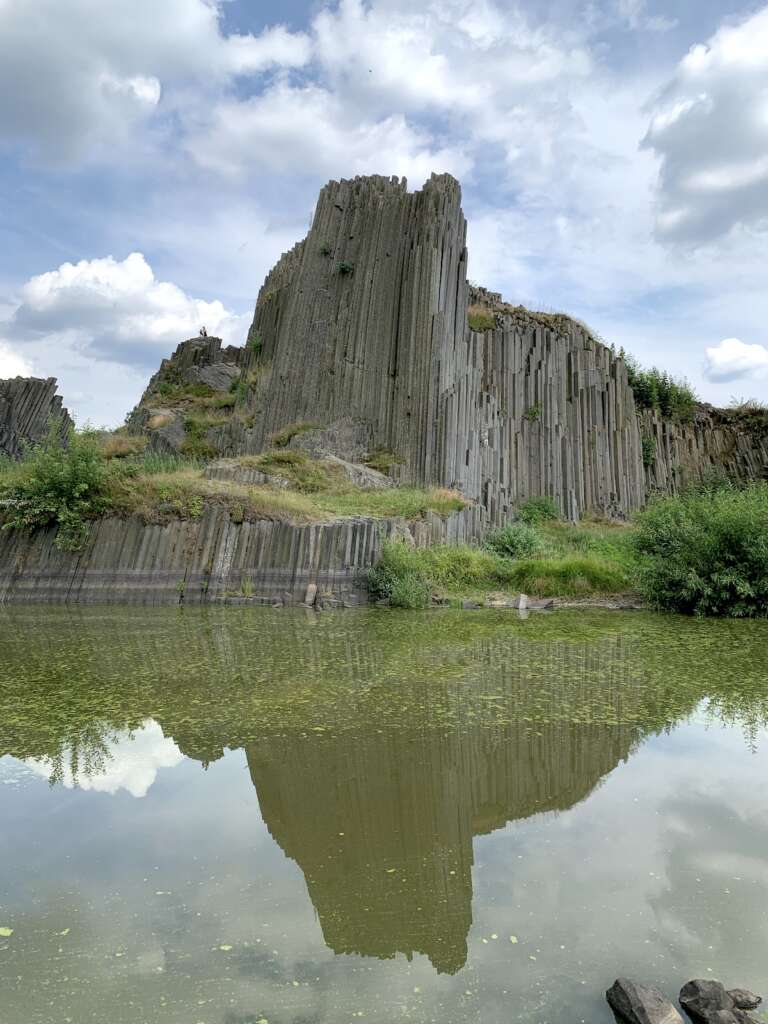
Surroundings
You can admire Panská skála from below, and at your own risk, you can also climb to its summit. Once at the top, you can look at the cross-section of the basalt columns, but also enjoy the panoramic view of the surrounding area! There, you will find plenty of hills which, in good weather, create a beautiful landscape.
